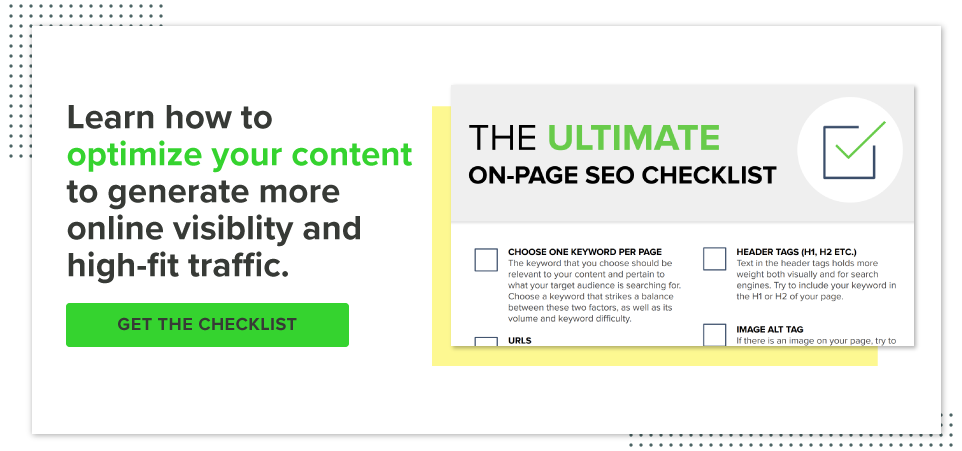
It’s no secret that an SEO strategy doesn’t work without content, and content can’t perform to its full potential without an SEO strategy. For both to work, they need the other. But what comes first? The age-old saying of the chicken and the egg comes to mind — should we create unique, relevant and engaging content that our potential customers will want to read and then find the keyword to match, or should we search for that perfect keyword and build our content around that?
Even writing this post, I’ve gone back and forth about it a couple of times because that’s how intertwined SEO and content are. The short answer is it depends on where you’re starting and what your goal is. It can be hard to know what’s best to prioritize in different situations, and especially with SEO and content, things are not always black and white. So let’s go through a few different scenarios to see what the best way to move forward.
You want to increase organic traffic
Let’s say you’re starting from scratch, and your goal is to increase your organic traffic as much as possible. Maybe you have some blog posts already, but they’re not performing well, and organic traffic has seen a significant decrease. In this case, as you may have guessed, an SEO strategy should be the first priority. Creating content that people are trying to find will be the most important step to reach the goal of increasing traffic. While creating useful and relevant content should still be the goal, the keywords behind it should take precedence.
You want to start creating content on a new topic
Maybe you have a deep bench of content, but you want to create a series of new blog posts on a certain topic. In this case, it’s almost like the content and SEO strategy happen at the same time. If you’re choosing a new topic to write a series of posts on, you’ll want to make sure that the topic is something your audience is interested in, and you’ll also want to make sure that there’s search volume that can back up the decision to write about that topic. It happens all too often that we want to write a post about a certain topic, but the keyword that accurately represents the intent of the post has little to no search volume behind it.
You’re redesigning your website
Another scenario that many clients of ours run into is what to do when creating a new website — especially when service offerings are changing, either slightly or drastically. Do you use the finished website content in order to get a full understanding of what the new service offerings are and then retroactively optimize the content for a keyword that fits or do you prioritize the search volume and try to find a keyword as relevant as you can and optimize the content around that?
This one lands somewhere in the middle as well. We don’t want to create website content without SEO direction, but SEO strategists need something to go off of in order to pick a relevant keyword for each page of the website that accurately captures the service offering and is backed by substantial search volume. To solve this problem, we work with the client to create what we call key takeaways, which distill the goal and purpose of each page on their new site down into something we can use to do keyword research and find the best possible keyword. If you’re thinking about giving your website a facelift, the key takeaways exercise can be helpful for both content and SEO strategy.
You have good content, but it’s not optimized
What happens when you have a lot of quality content that isn’t optimized for a relevant, non-branded keyword? Should you scrap it and start from scratch with a brand new keyword-focused content strategy? Heck no! Use that high-quality content you already have to gain more traffic with less work. While it’s not ideal that the content was created without a keyword in mind in the first place, it can still be used to generate more organic traffic with a little bit of TLC.
The best way to go about this is to find out what keywords the post is already ranking for (if any) and choose one of those to optimize the post for. It will be much easier to get that post to rank higher for a term it’s already ranking for than to start from scratch with a new keyword.
In this case, the best course of action is to read the post again and do keyword research to try and find a relevant keyword that can be used to re-optimize the post. In fact, this is a tactic we use frequently with clients that have seen a decrease in organic traffic. It takes less time and effort to re-optimize a post than to ideate a topic, do keyword research, create the content and optimize it.
The Takeaway
So at the end of the day, even if I still can’t settle the chicken and the egg debate, I feel confident enough to be able to settle the SEO vs. content debate. In most cases, you’ll want to decide on an SEO and keyword strategy before you jump in and write content. Happy keyword hunting and happy writing (in that order)!





